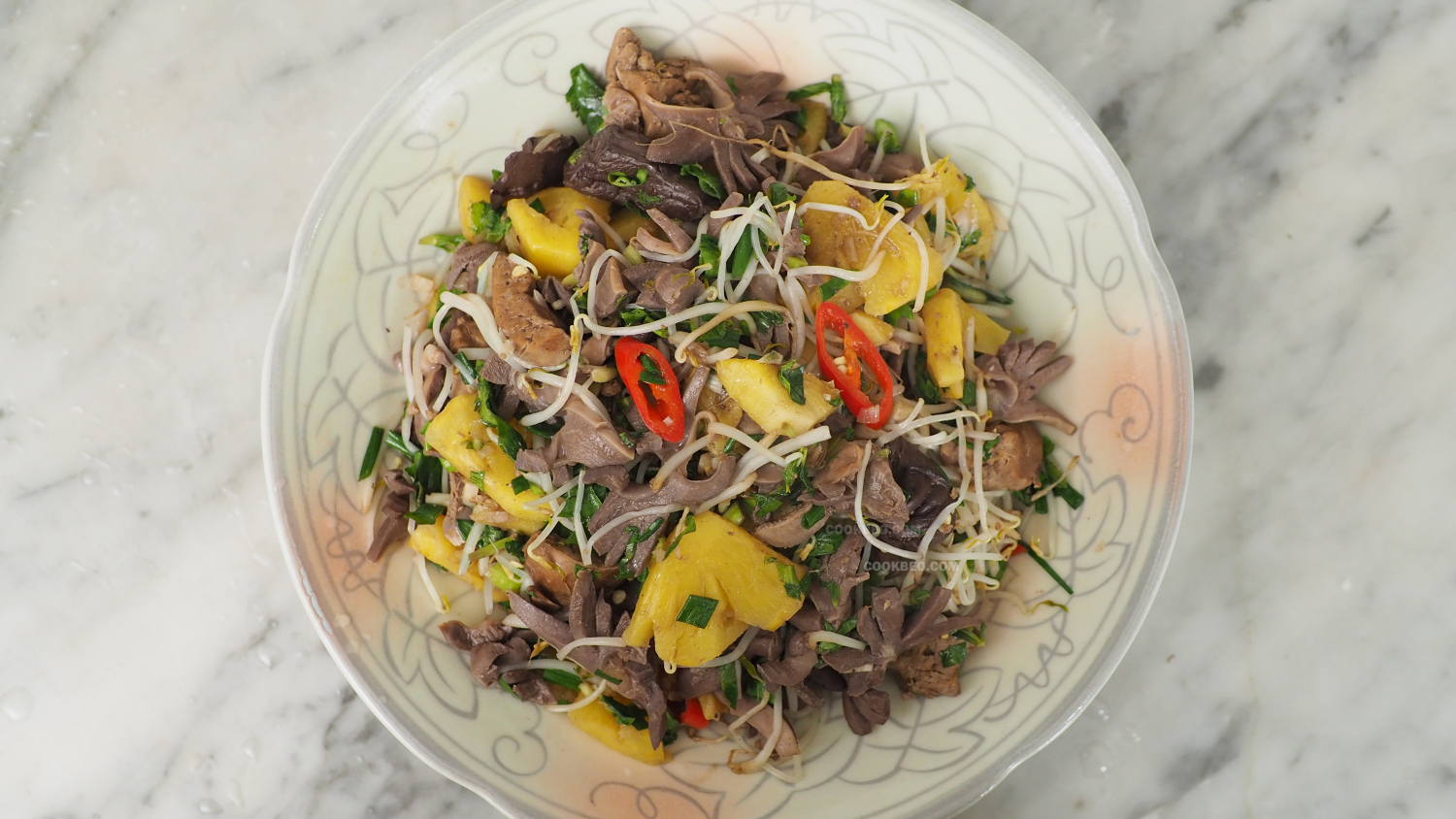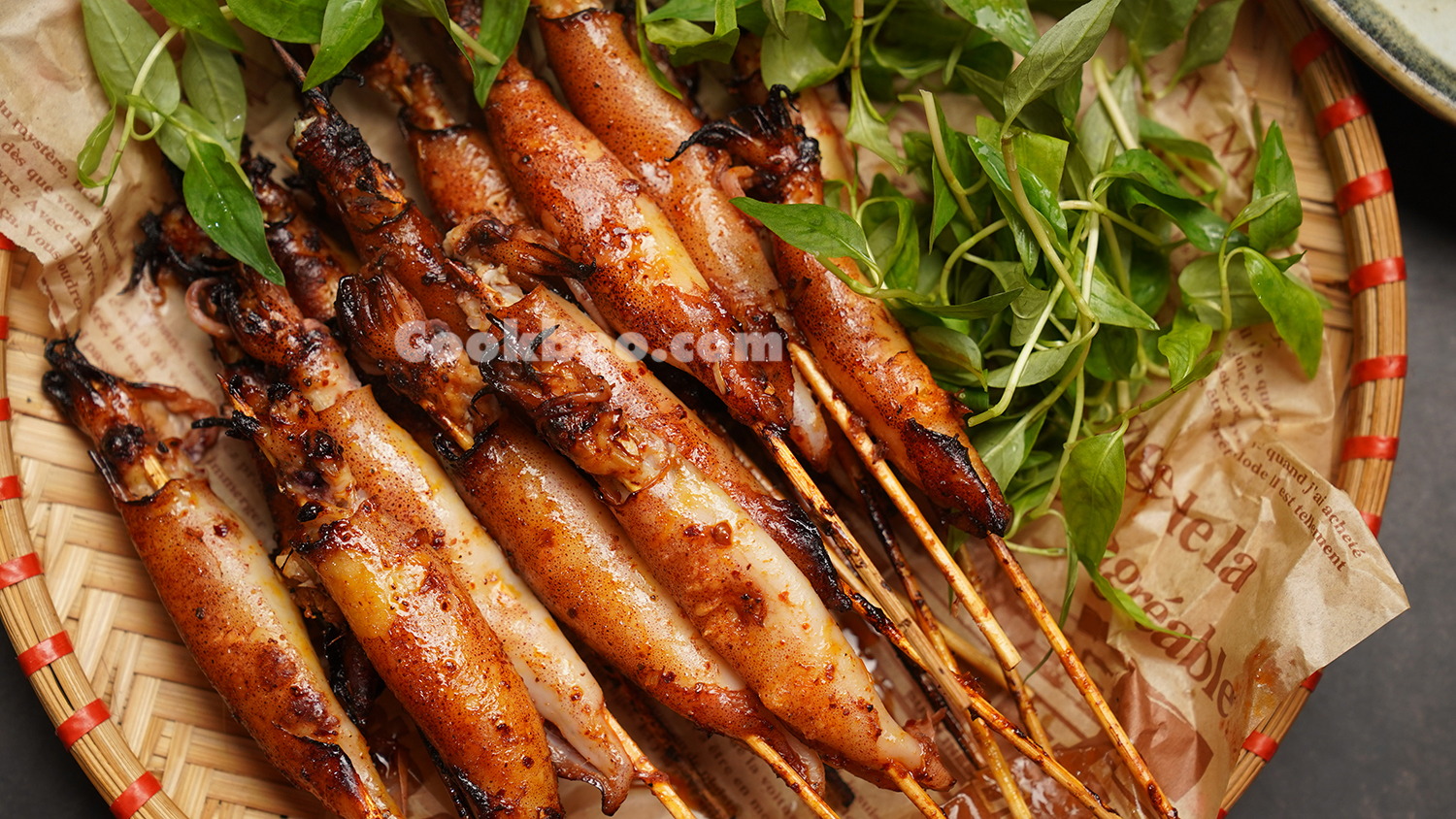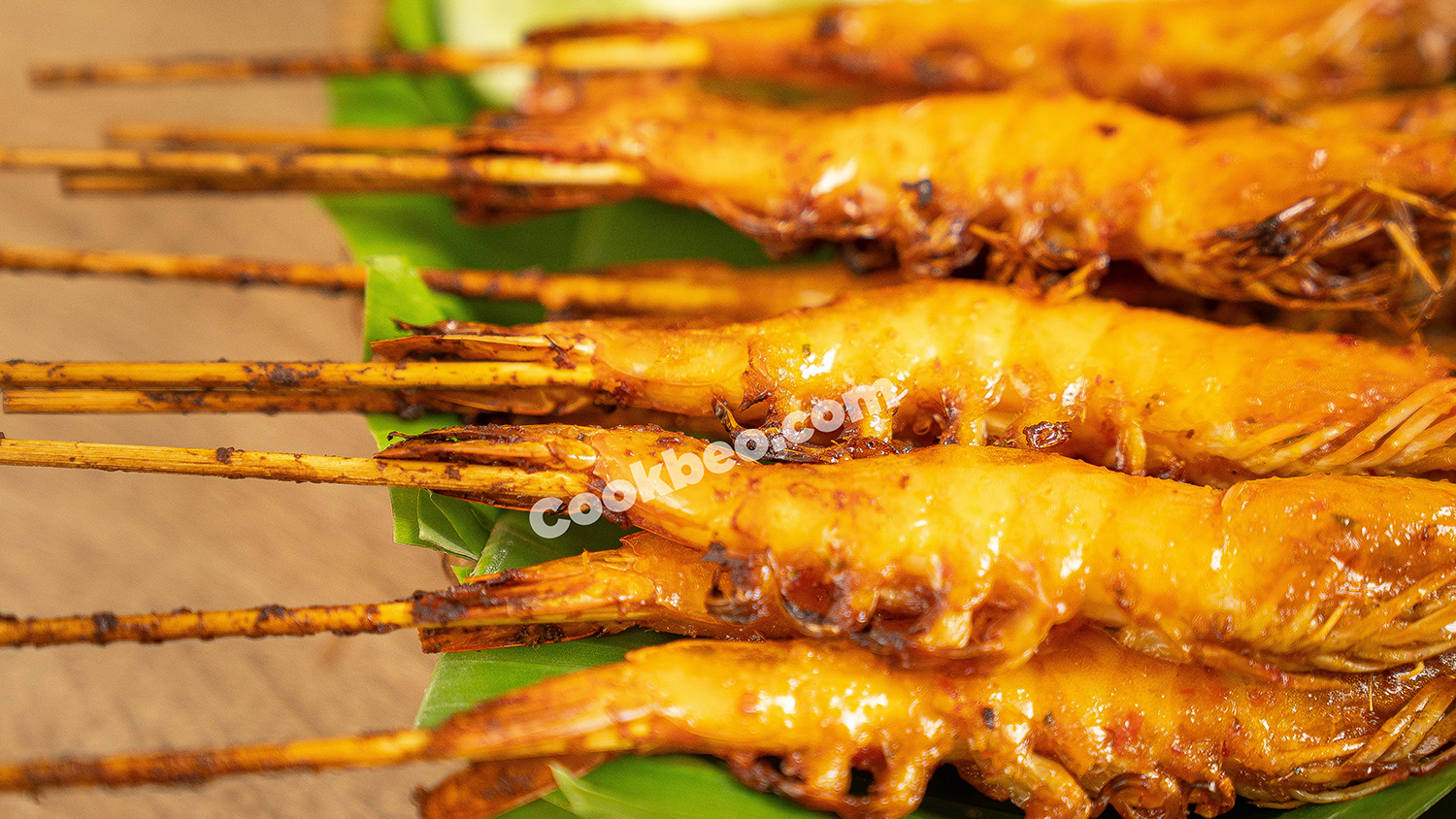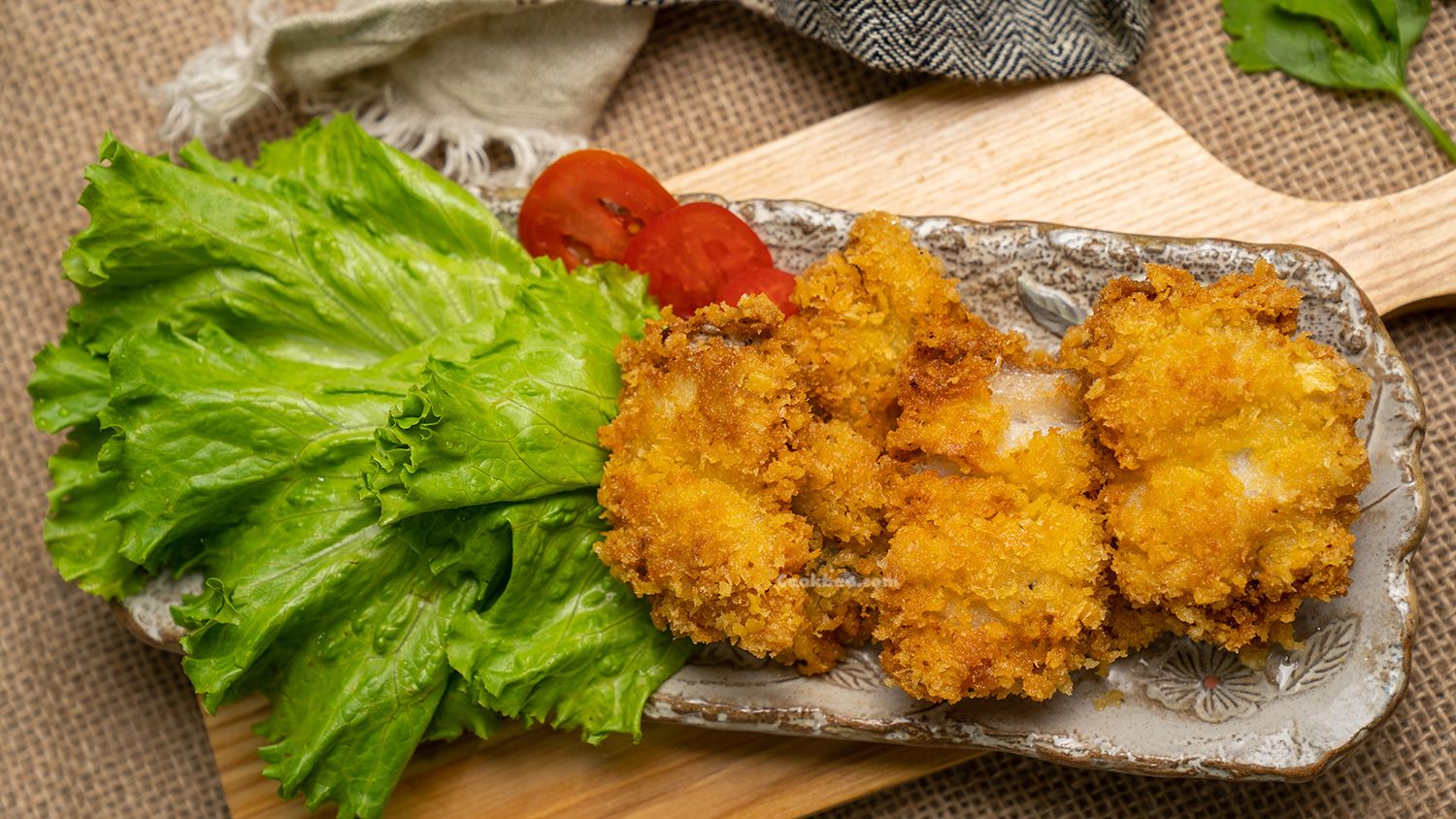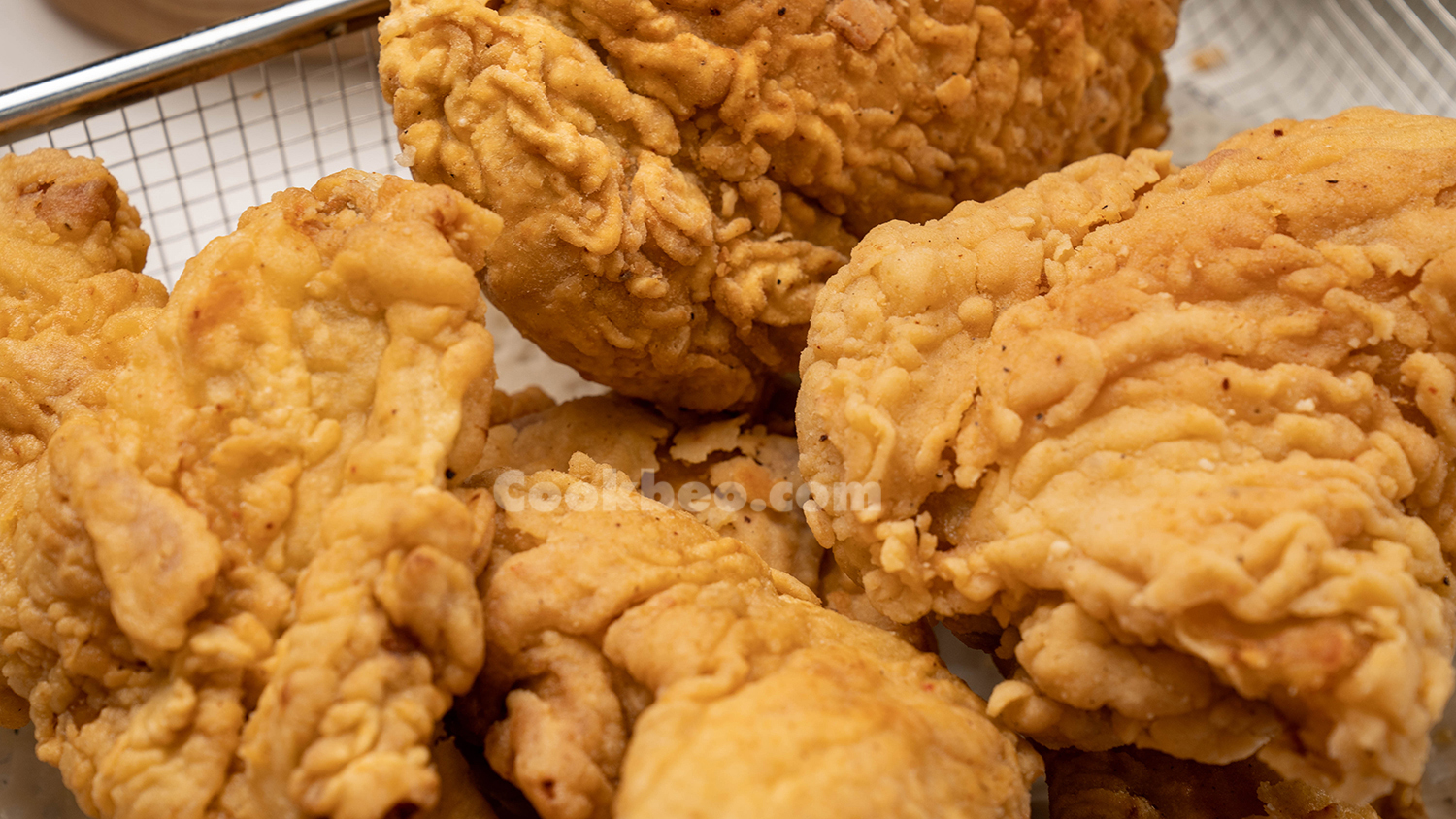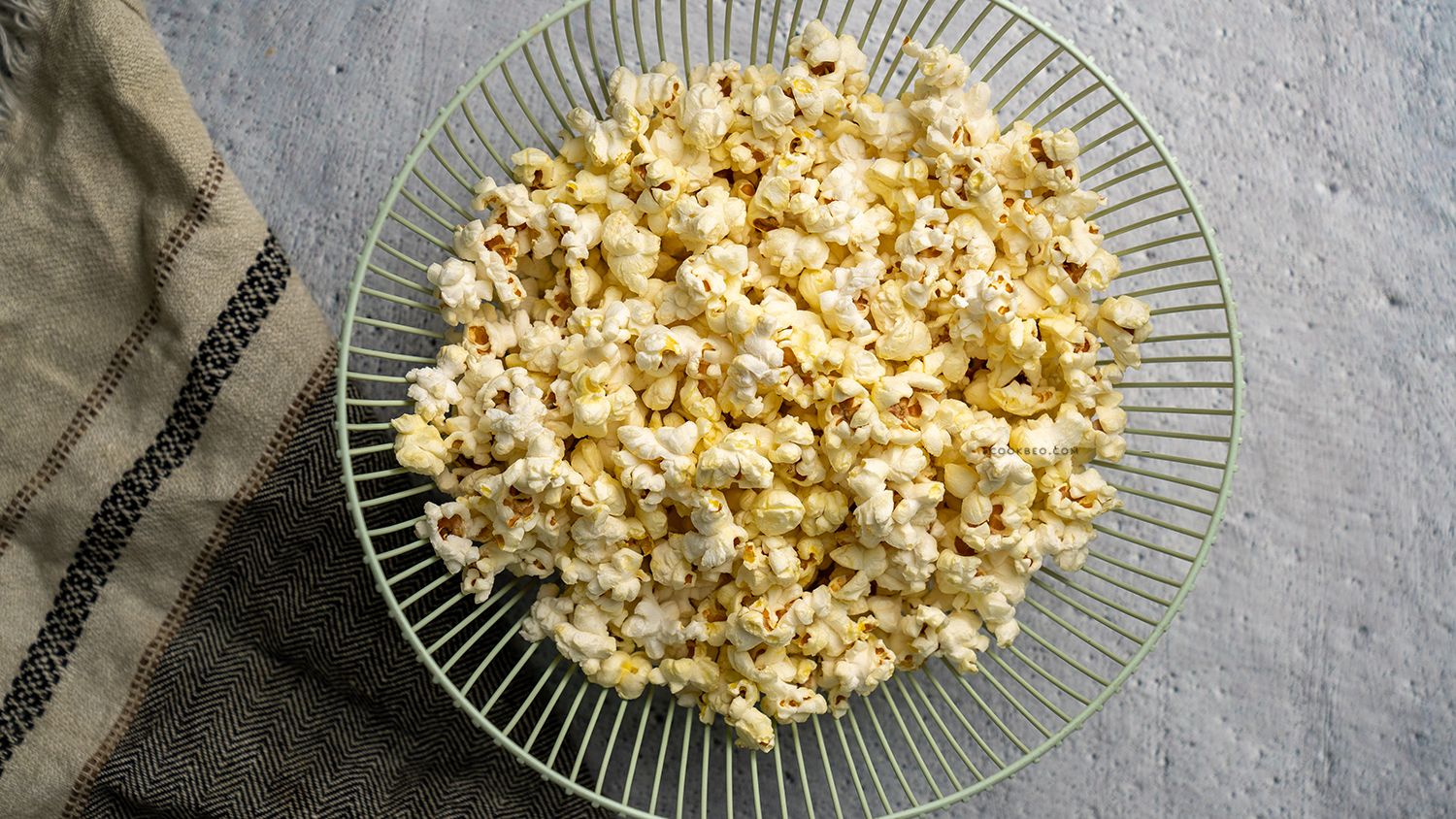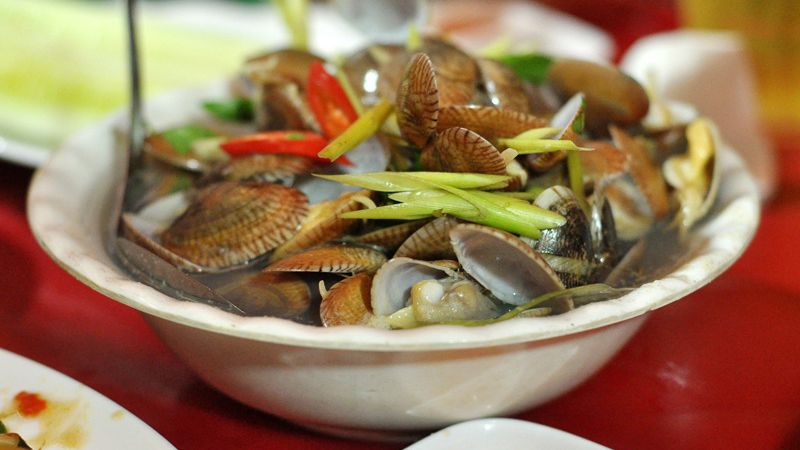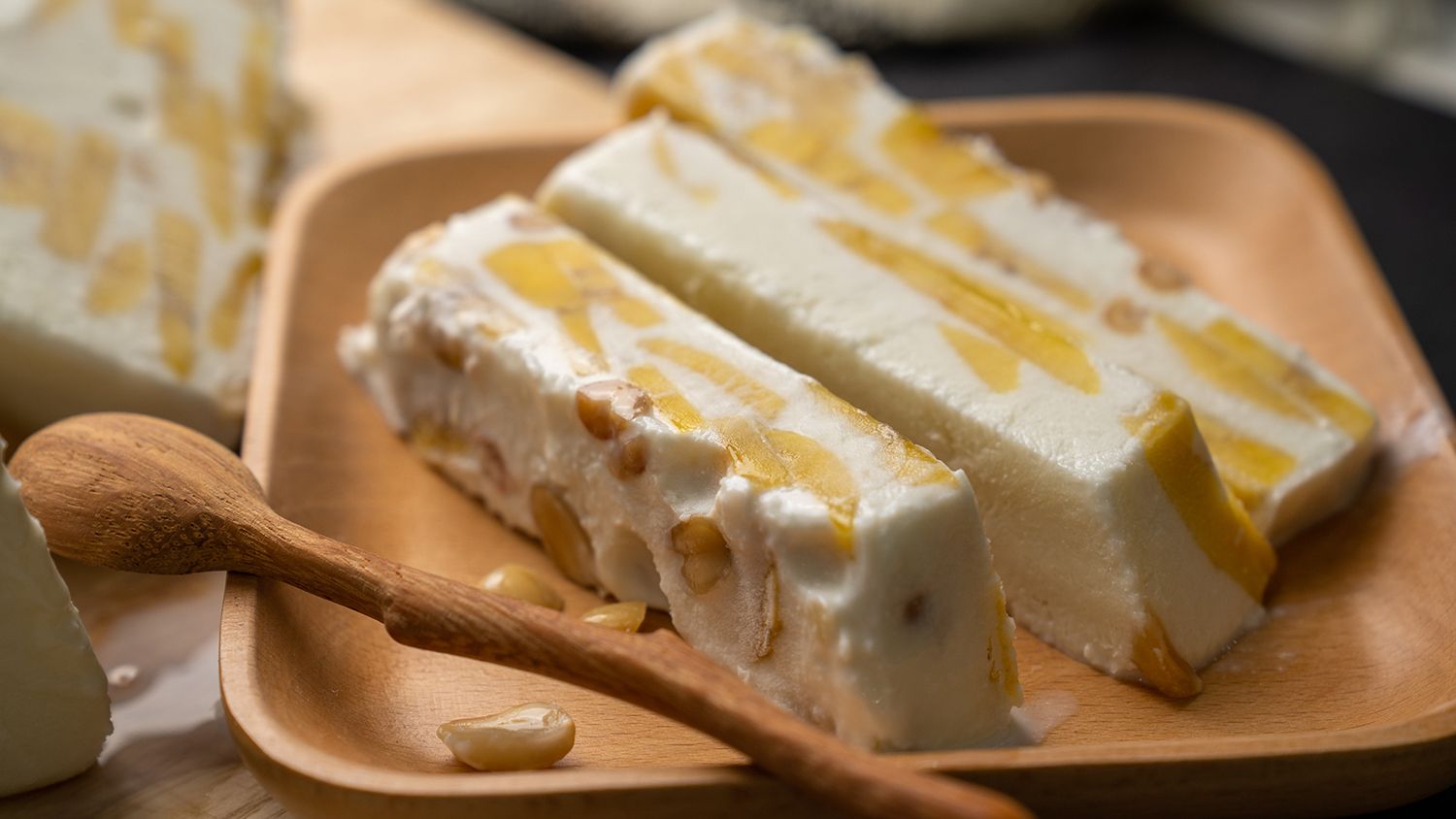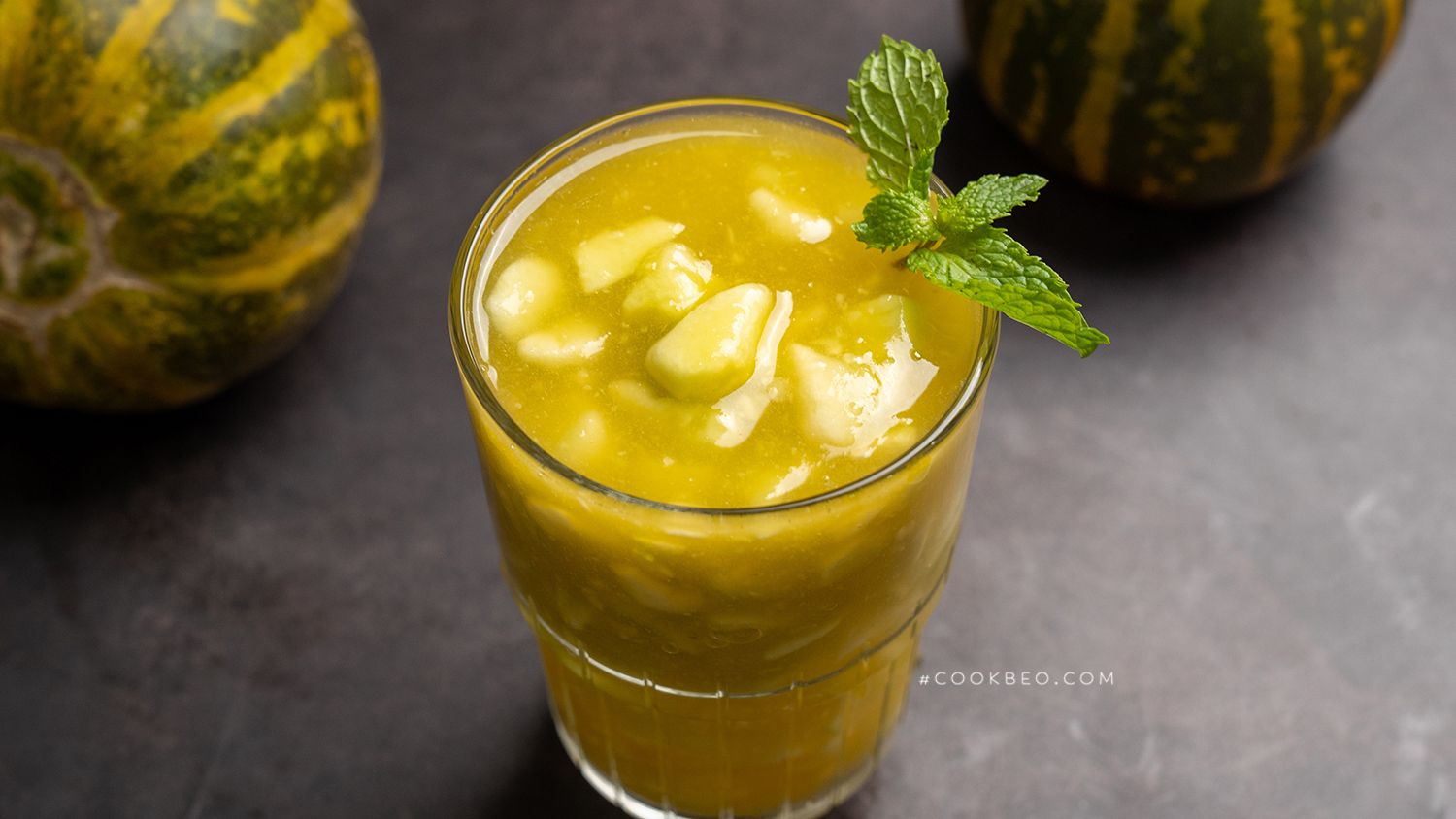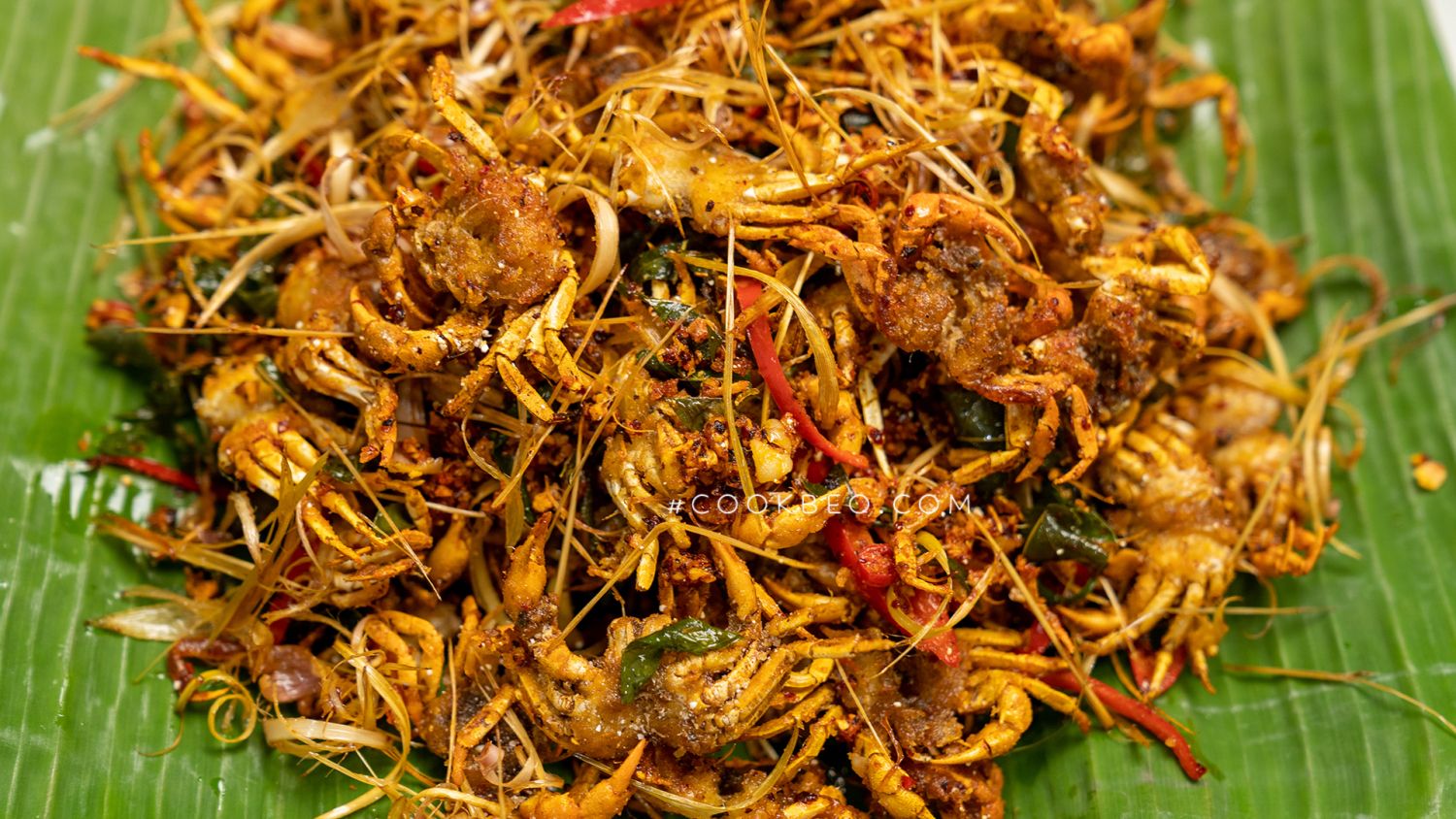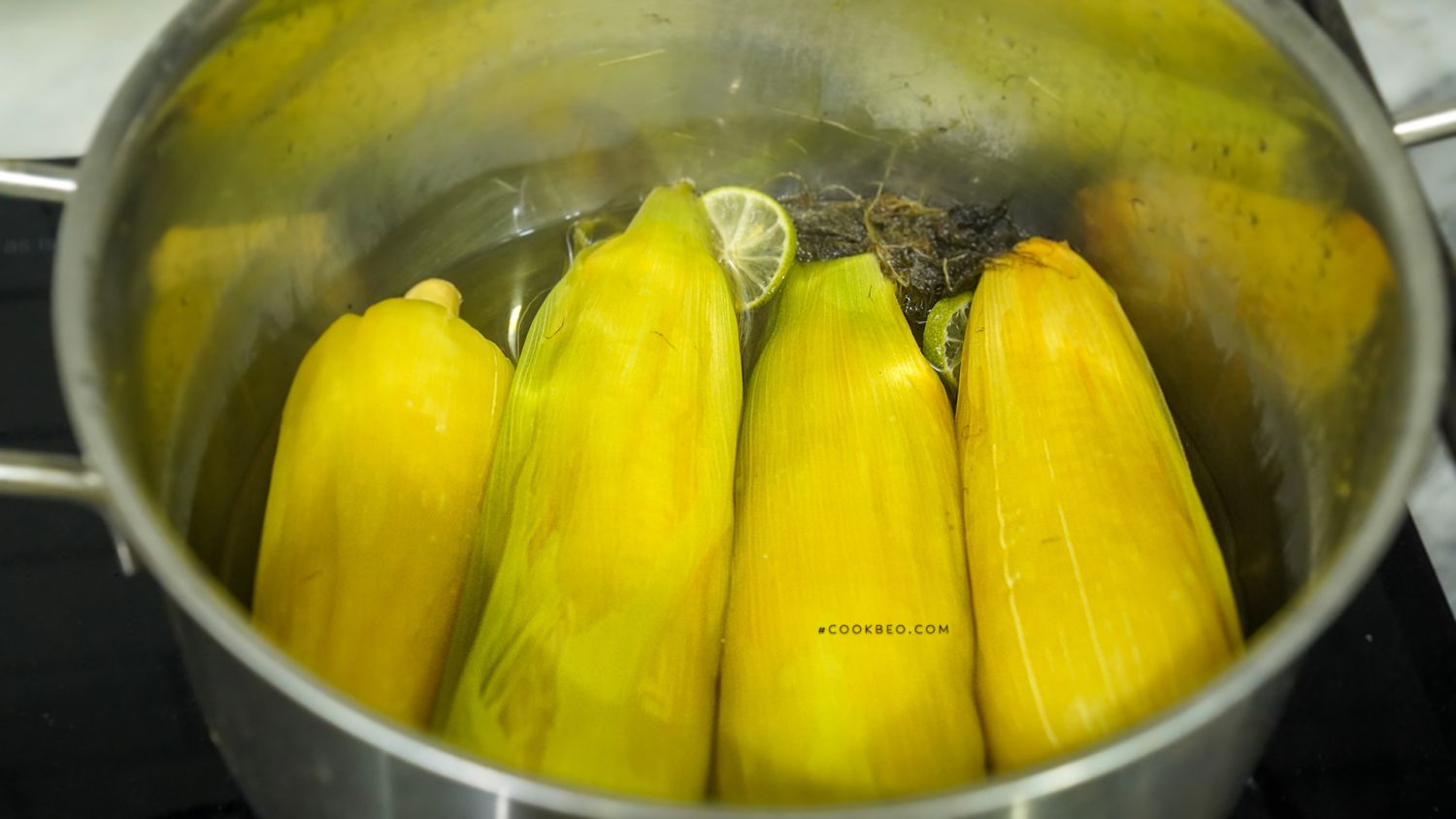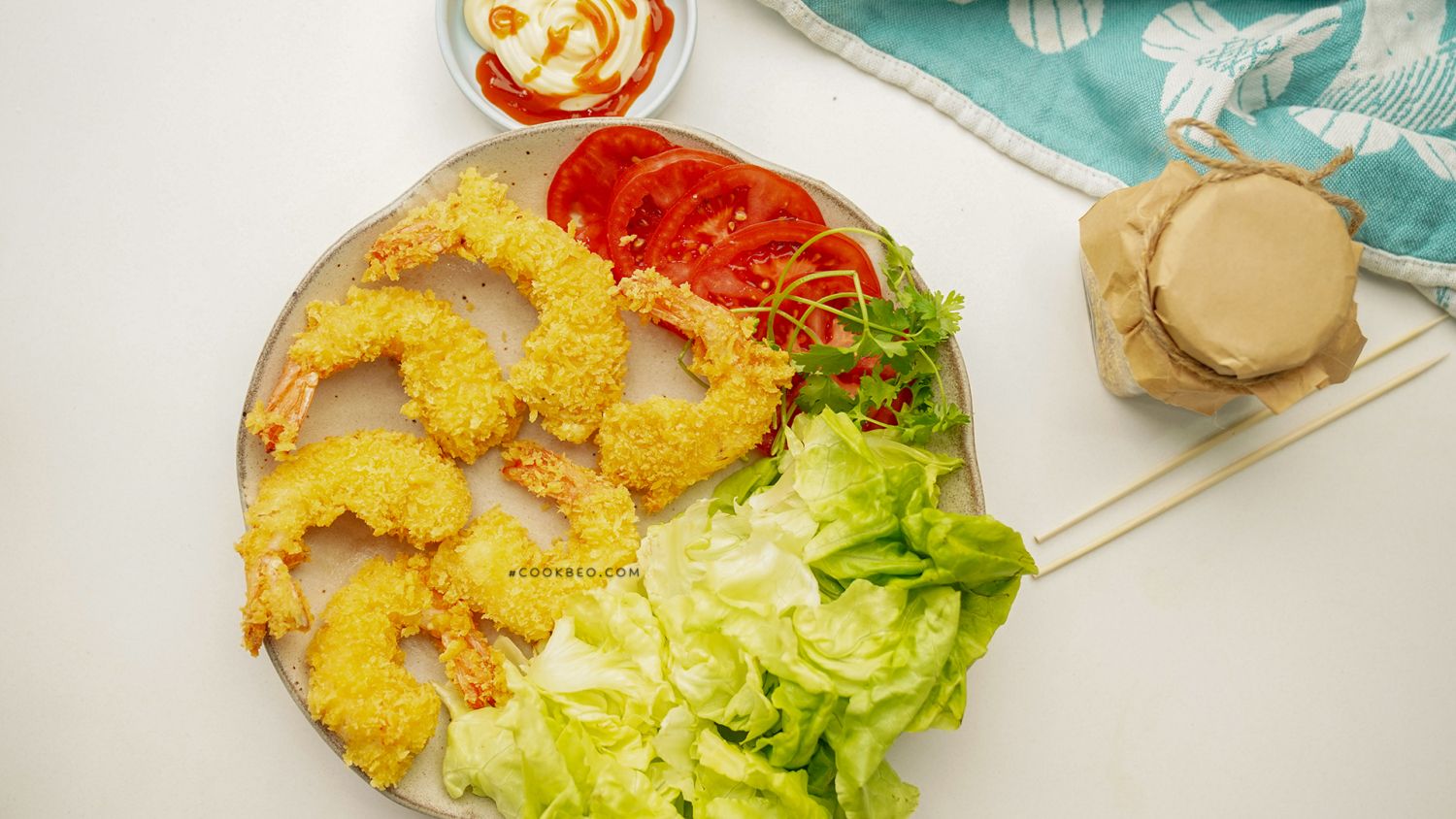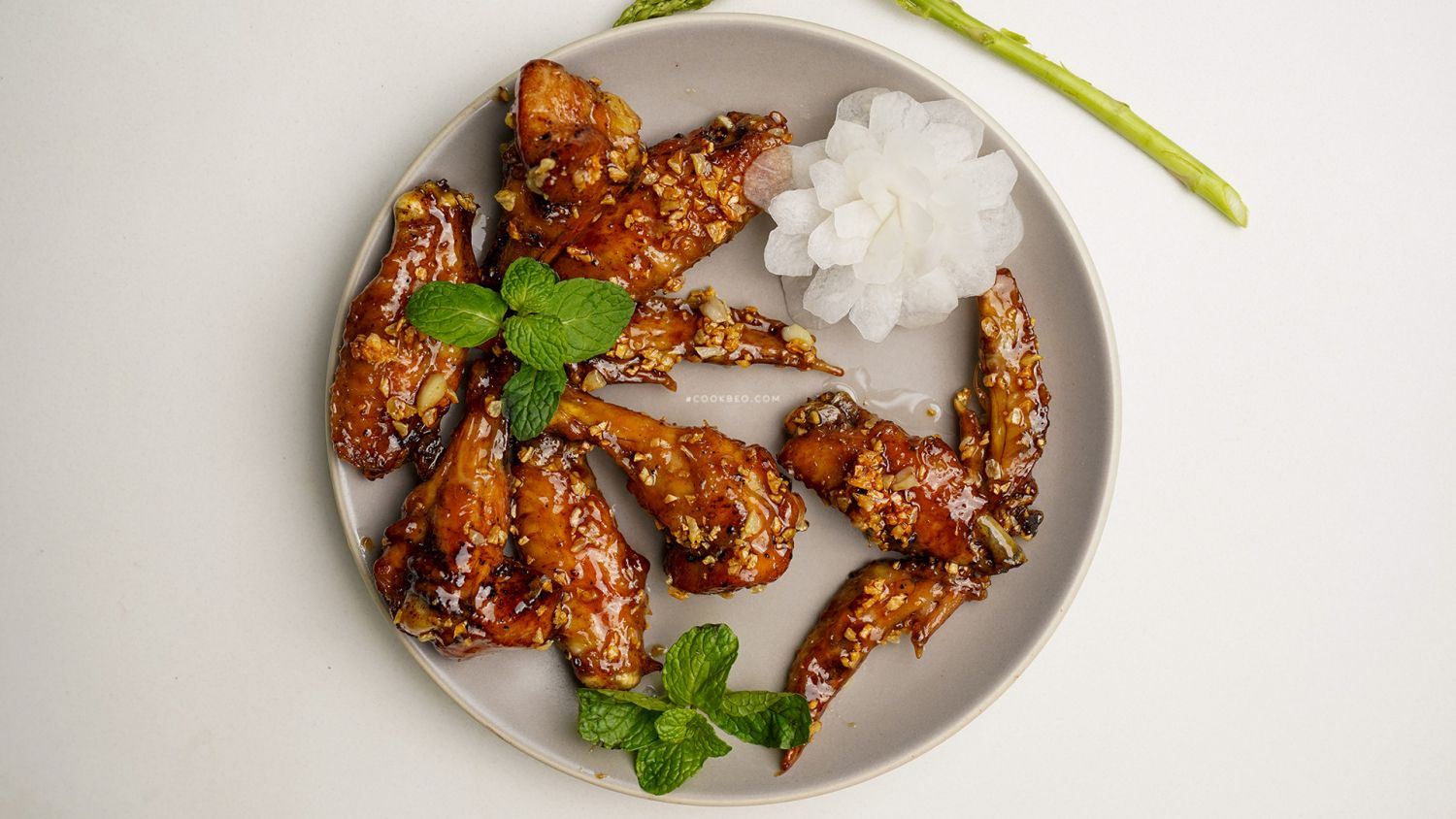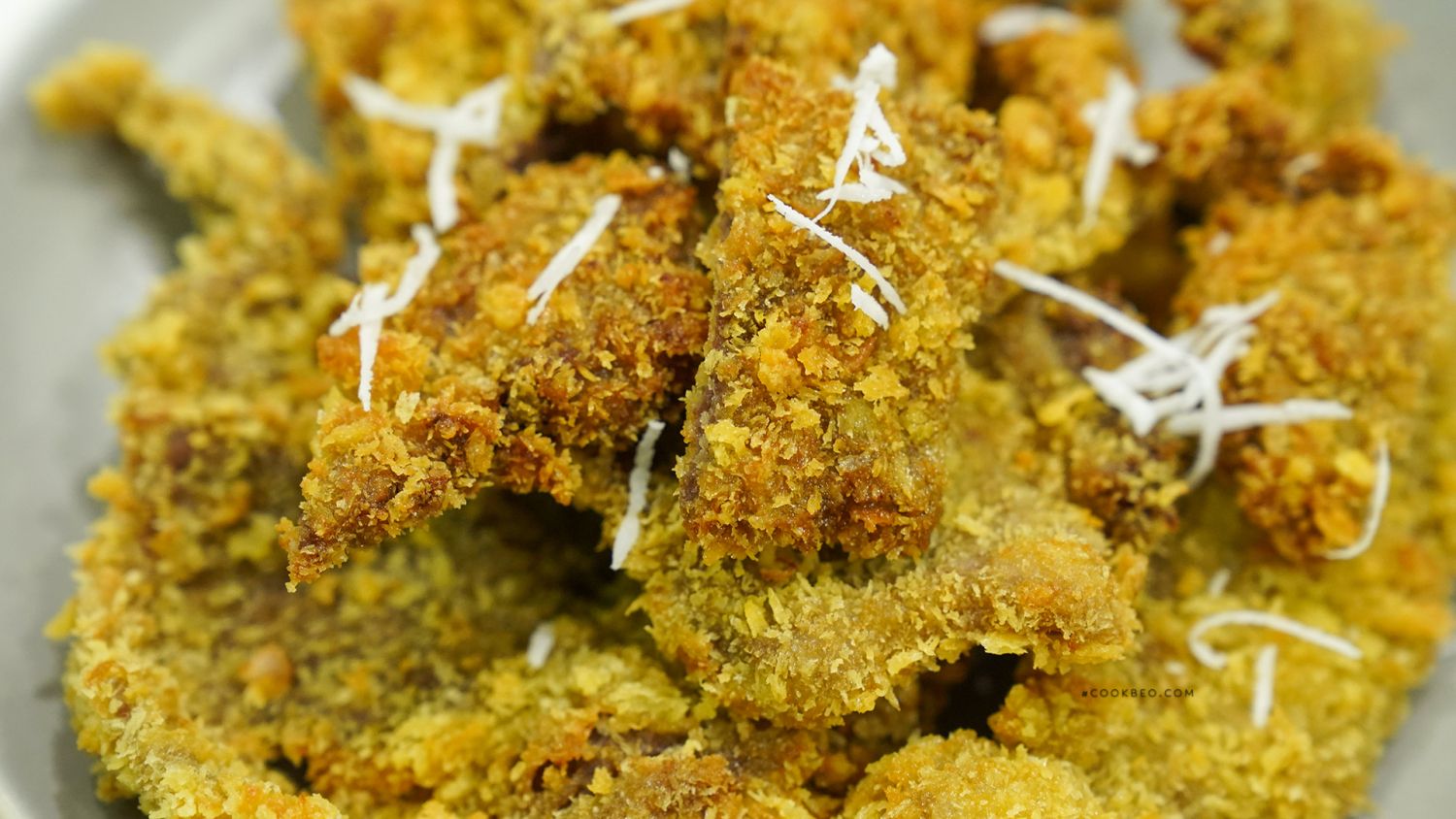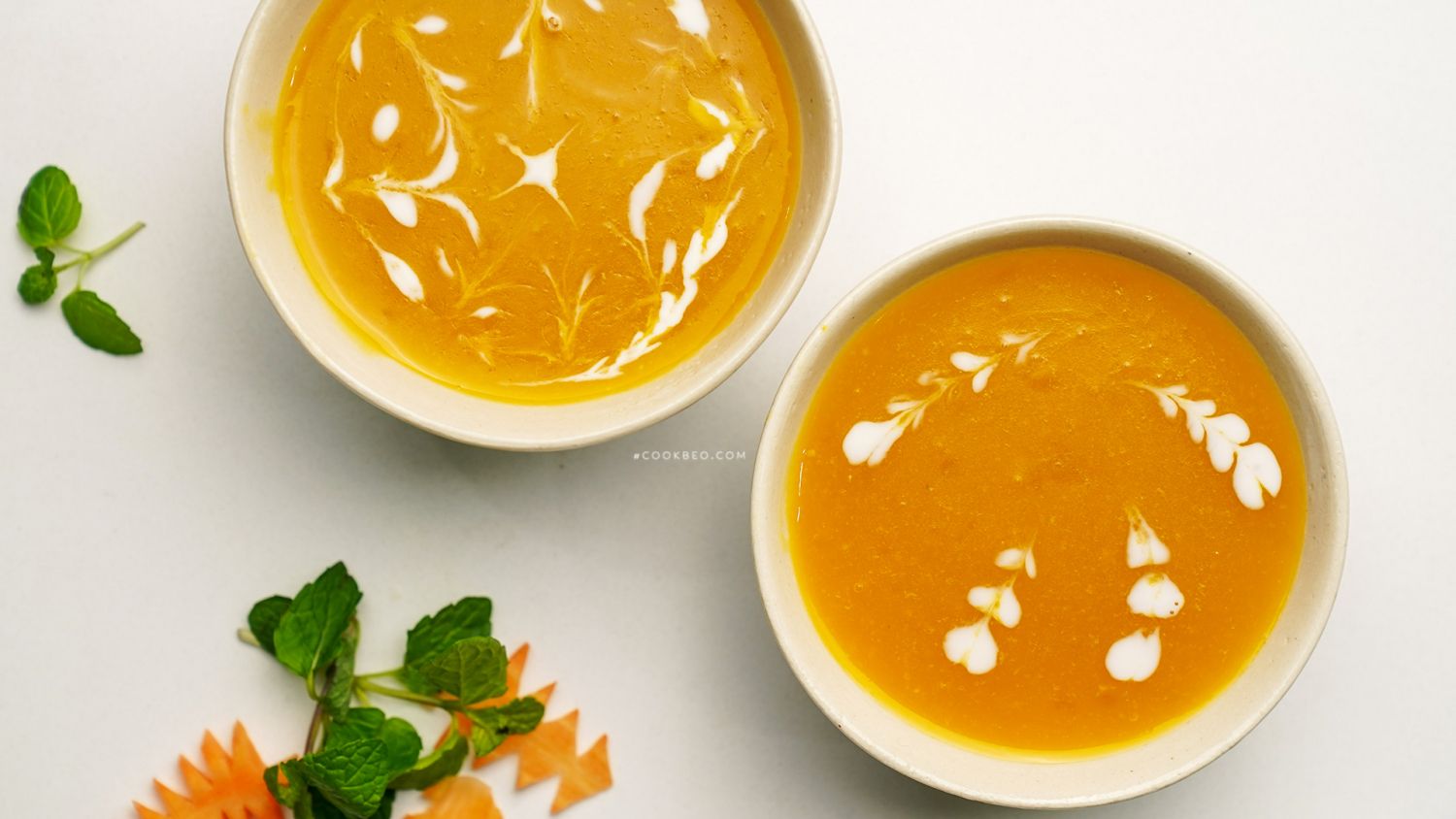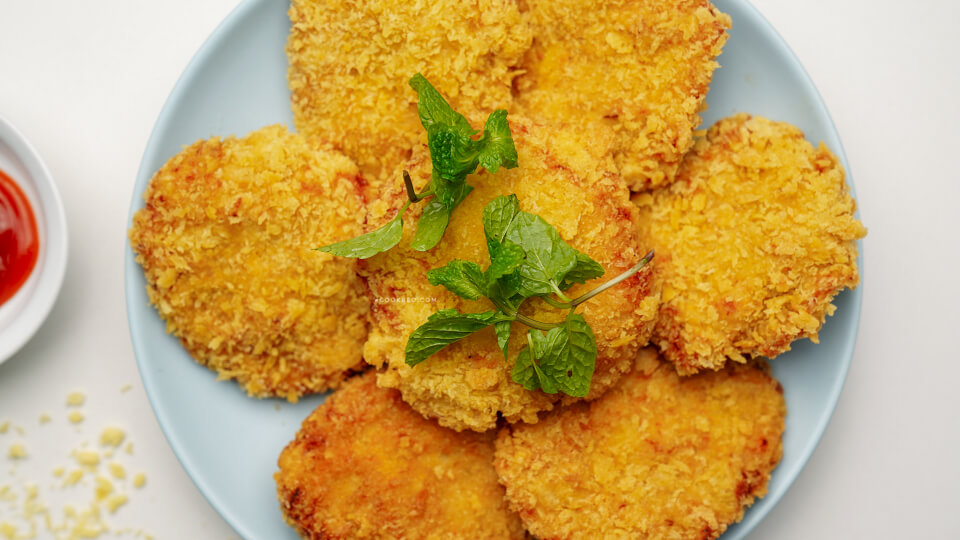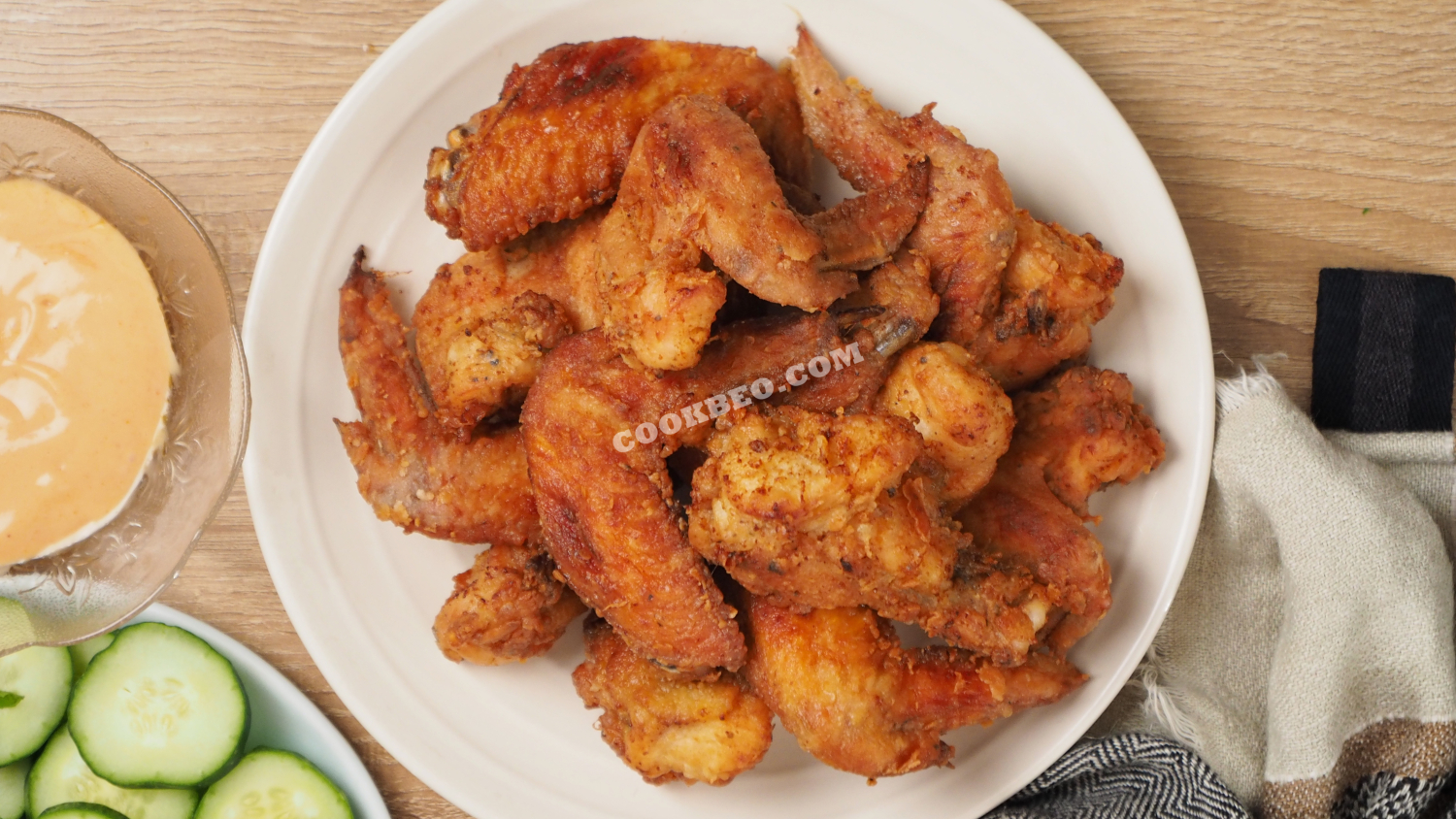How to Make Vietnamese Cassava Cake
When making baked cassava cake, it's important to soak the cassava thoroughly, cook it well, and control the amount of coconut milk to avoid making the cake too wet and mushy.
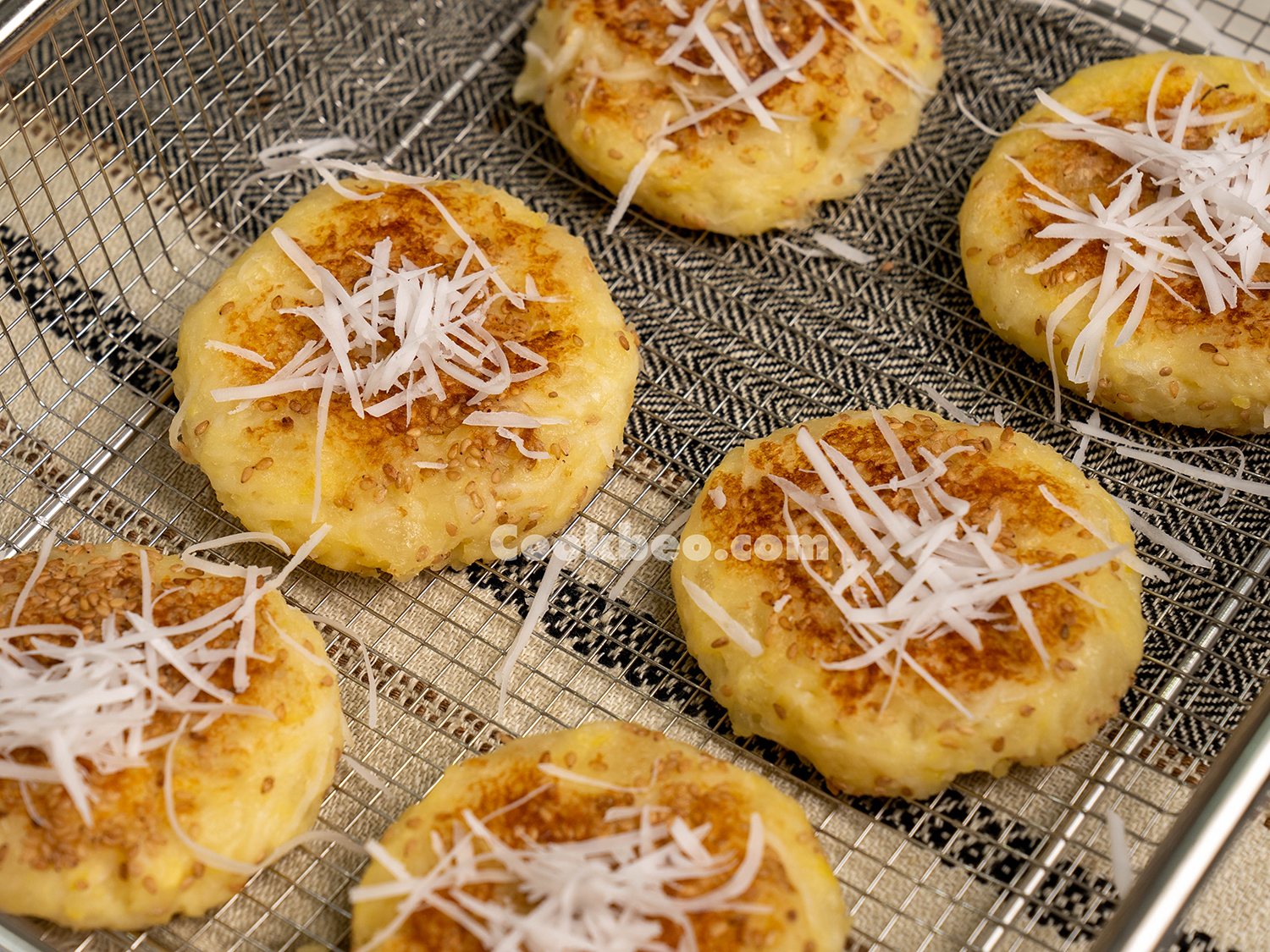
Ingredients
- 950g - 1kg cassava
- 100g shredded coconut
- 40-50ml coconut milk
- 50ml condensed milk
- 100g sugar
- 50g salt
- 100g peeled mung beans
- 20g white or yellow sesame seeds
- 10g tapioca starch
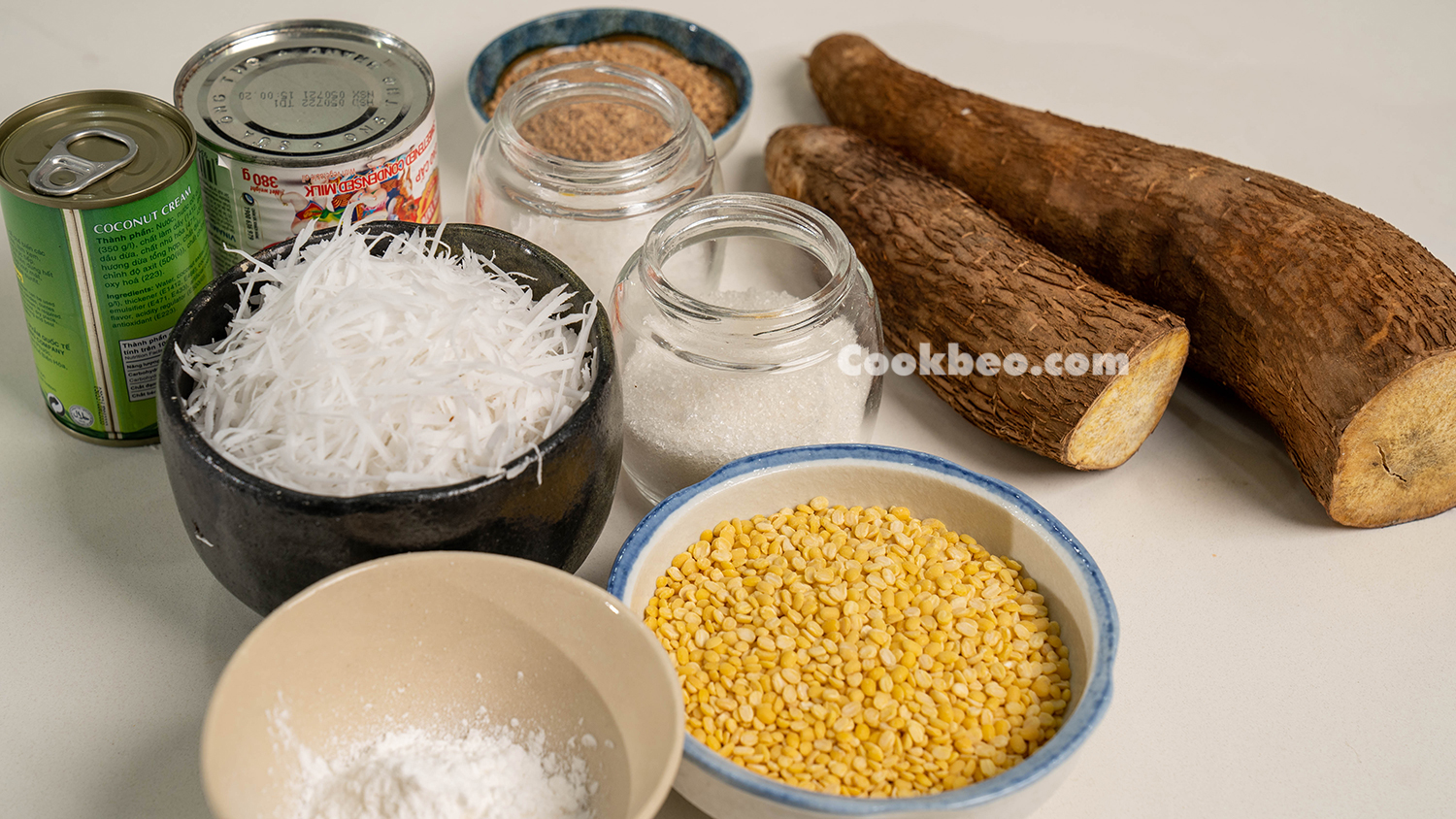
Ingredient Notes
- Cassava, also known as yuca or manioc, should be firm, heavy, and fresh without any signs of rot or softness.
- This recipe uses mung beans to enhance the creaminess of the baked cassava cake, also known as 'bánh khoai mì'. If you don't prefer it or can't find it, feel free to omit it.
Instructions
Preparing the Cassava
Thoroughly clean the cassava to remove all dirt, then cut off the ends. It's important to cut a bit deeper at the ends because these areas often contain sap and toxins, especially where the plant was previously cut during harvesting.
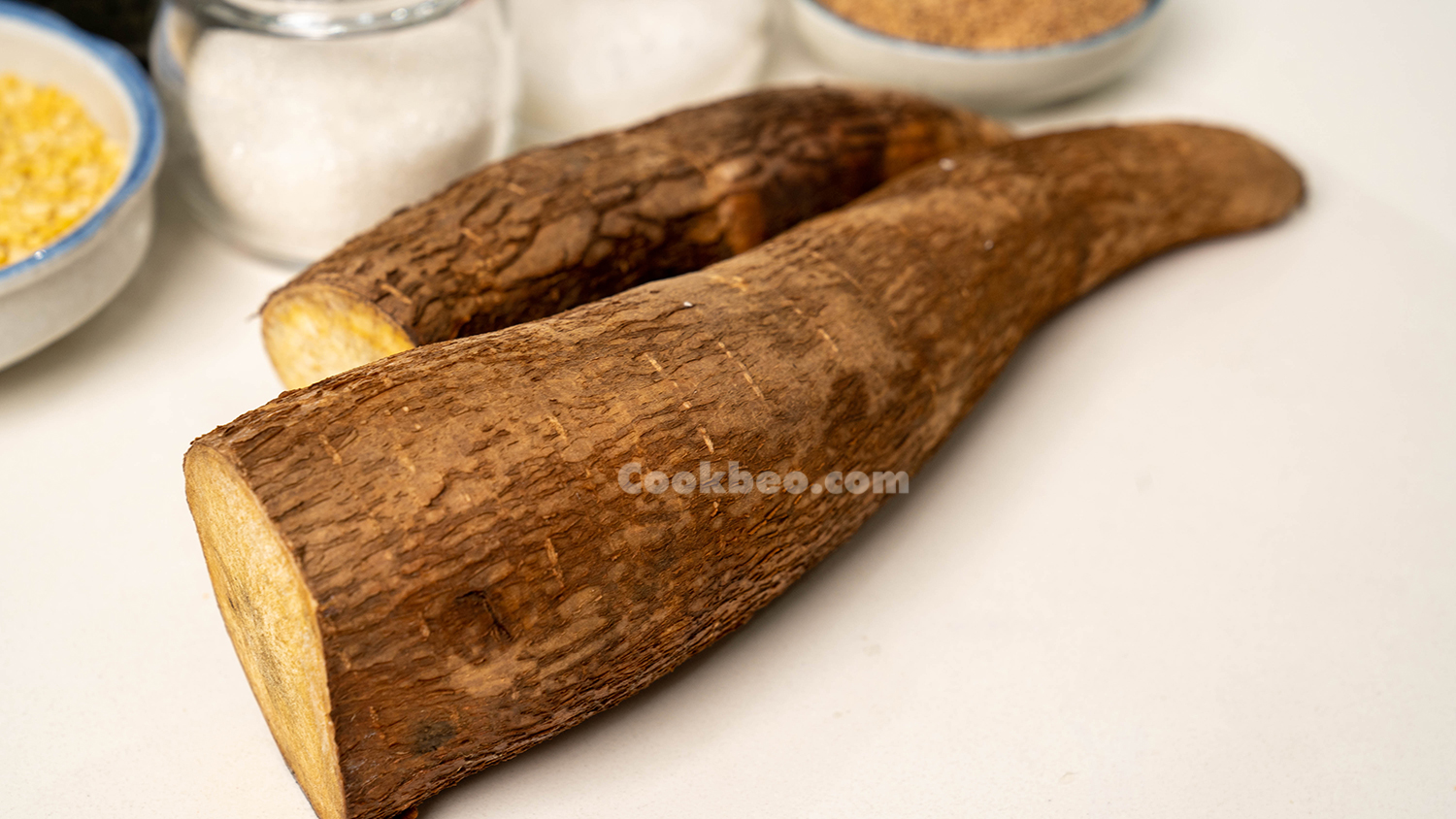
Next, peel off the cassava’s outer brown layer and the thin inner pinkish-white skin. You can peel it easily by cutting the cassava into smaller sections and making a lengthwise slit to remove the peel.
Typically, from 1kg of cassava, after trimming the ends and peeling, you'll have about 800g left.
Once peeled, rinse the cassava and soak it in water. It's recommended to add a bit of salt to the soaking water, or even better, use rice-washing water mixed with salt to soak the cassava, making it cleaner and free of any unpleasant odor. Soak the cassava for at least 5-6 hours, scrubbing it occasionally and changing the water for better cleanliness.
Although cassava contains many nutrients, it also contains hydrocyanic acid, which can cause dizziness or, in severe cases, poisoning. This toxin is mostly concentrated in the peel, the fibrous core, and the ends of the cassava. However, this acid can be dissolved in water and neutralized at high cooking temperatures. Therefore, it's crucial to soak cassava thoroughly before cooking to ensure it's safe to eat.
Preparing the Mung Beans
Rinse the mung beans and soak them in water for 4-5 hours, similar to the cassava. Be sure to change the water periodically to prevent the beans from souring.
As for the other ingredients, especially the shredded coconut, wrap it up and store it in the fridge because it can spoil quickly at room temperature.
Boiling the Cassava
After soaking, rinse the cassava again and put it in a pot. Add water and a pinch of salt, then bring to a boil. Make sure there's plenty of water, and don't cover the pot while boiling so any remaining toxins can evaporate.
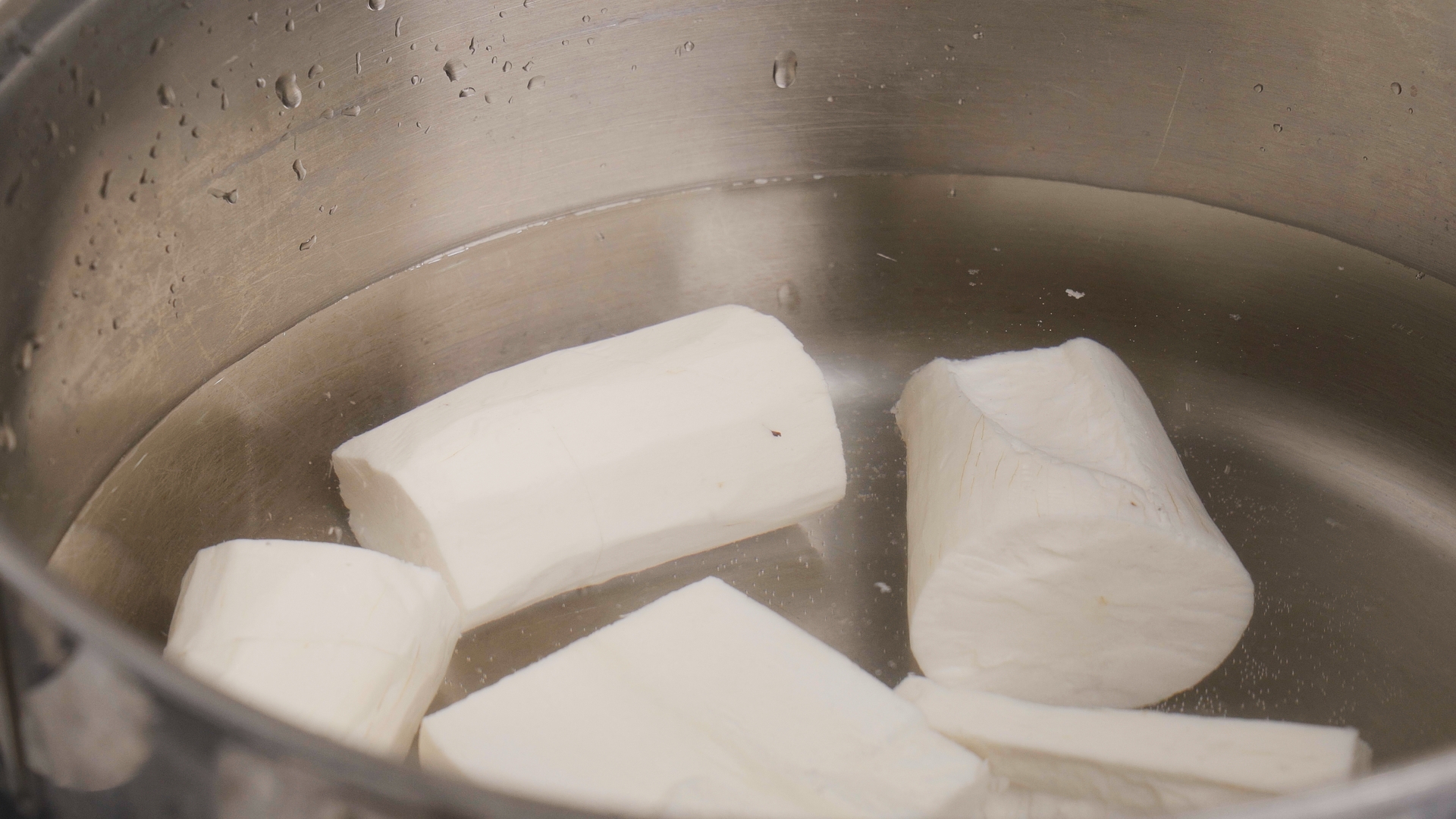
Once the water reaches a boil, reduce the heat and simmer. The boiling time will depend on the amount of cassava and the heat level, but it generally takes 40-50 minutes. To check if the cassava is done, pierce it with a chopstick—if it goes through easily, the cassava is ready. Softer cassava cooks faster than firmer varieties.
Near the end of the boiling process (10-15 minutes before turning off the heat), drain most of the water, leaving a little at the bottom. Lower the heat, cover the pot, and let the cassava steam on low heat for a few more minutes. This will enhance the flavor and texture.
Steaming the Mung Beans
Fill a pot with water, making sure it covers about half the height between the bottom of the pot and the steamer basket. Once the water is boiling, add the mung beans to the steamer. Spread the beans evenly, reduce the heat to low, and cover the pot tightly. Steam for about 35 minutes. Occasionally open the lid to stir the beans so they cook evenly.
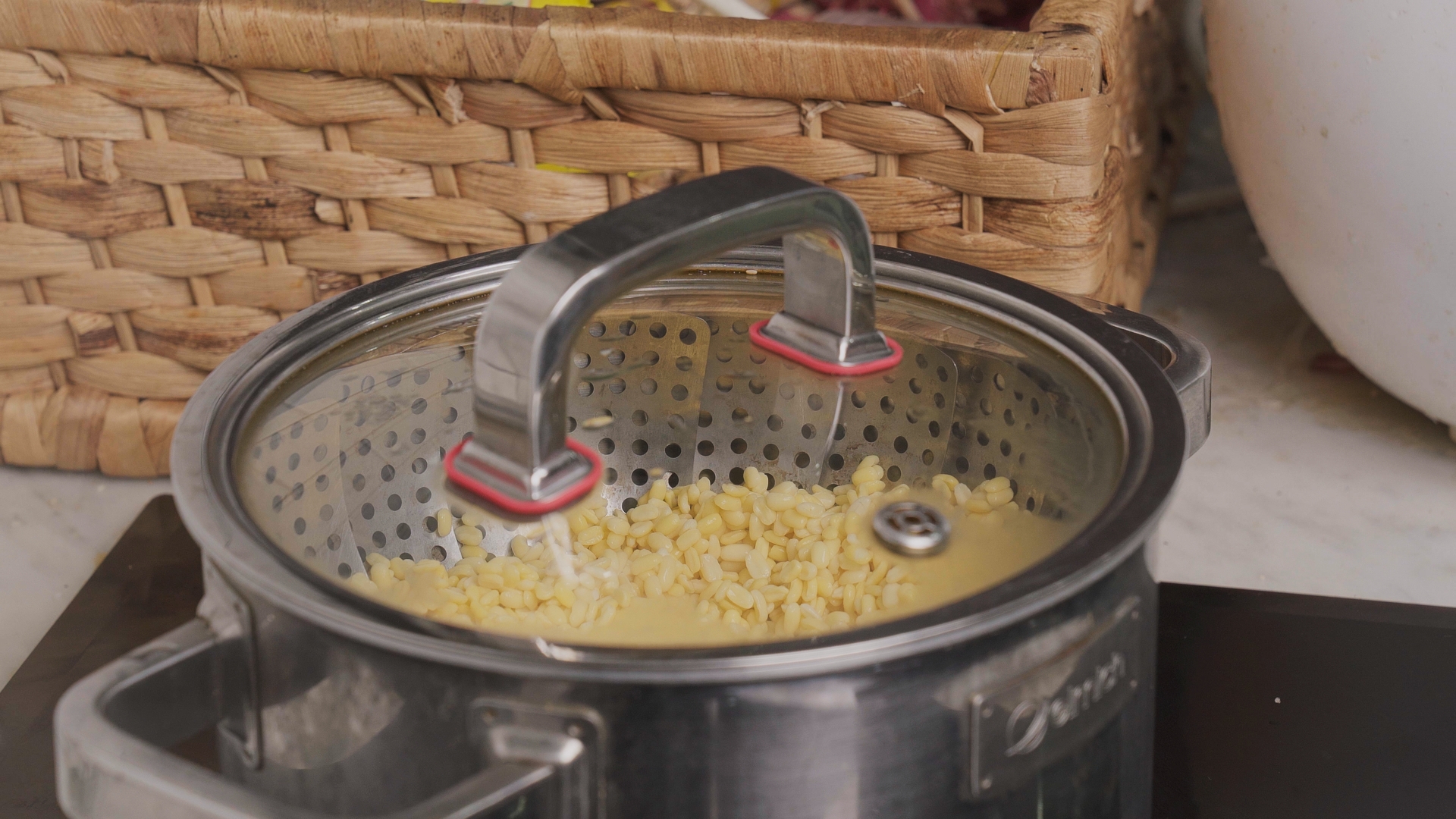
Because the mung bean steaming time and cassava boiling time are similar, it's efficient to steam the beans while the cassava is boiling to save time.
Kneading and Shaping the Cassava Cakes
Once the cassava and mung beans are cooked, place them in separate bowls and mash them. You can either mash them manually using a pestle or use a blender. If you use a blender, be cautious not to overheat the machine. Mashing by hand tends to produce better consistency for the cakes.
If using soft cassava, it mashes easily and creates a crumbly, dry cake with a rich texture. Firm cassava is harder to mash but gives a smoother consistency. It's best to mash firm cassava while it's still hot, as it becomes tougher when it cools.
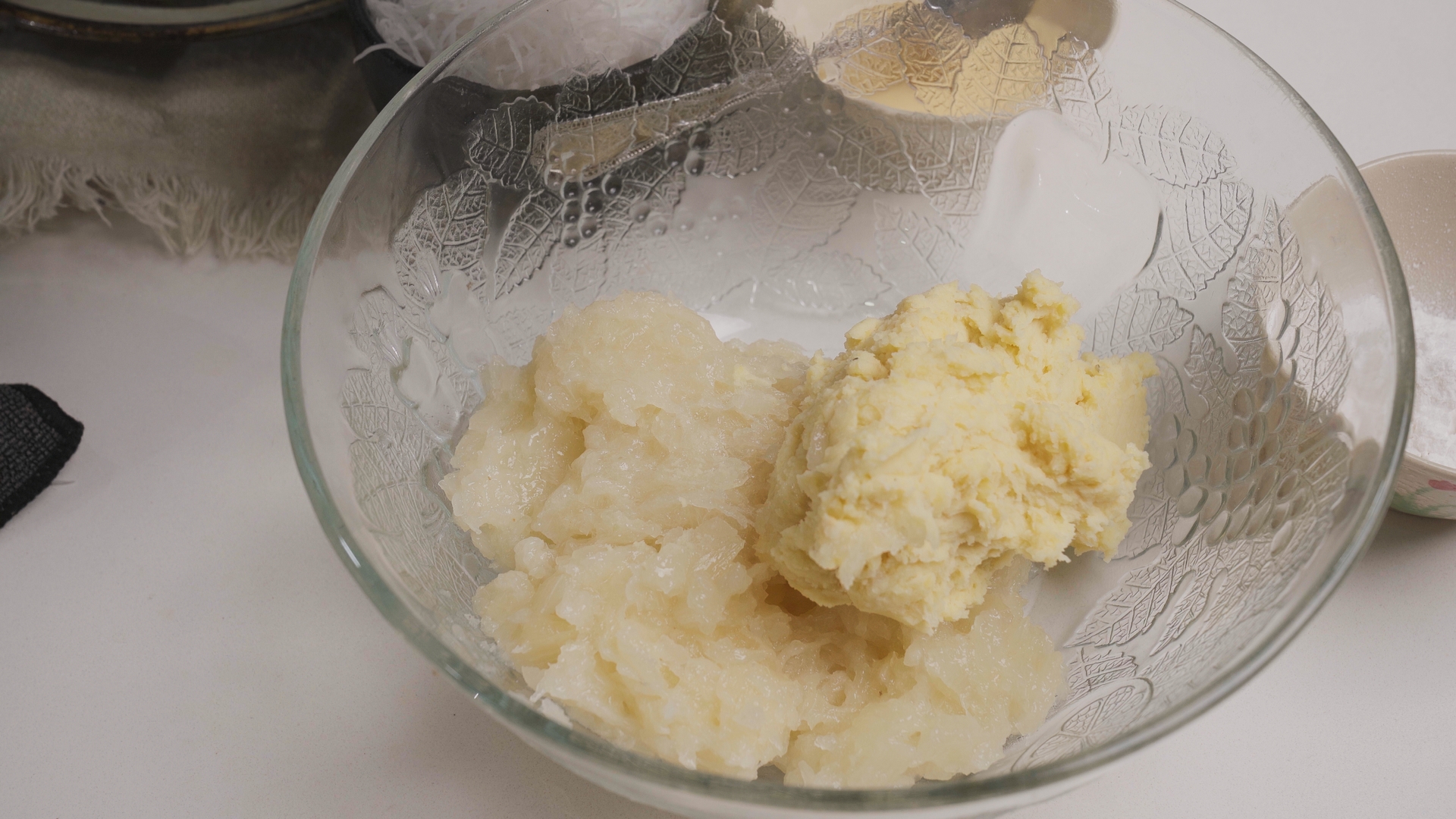
Mash the cassava first, then the mung beans, and combine them in a large bowl. Add the shredded coconut, sugar, condensed milk, tapioca starch, and coconut milk. Slowly pour in the coconut milk, adjusting the amount to prevent the mixture from becoming too wet, which will make it difficult to shape the cakes.
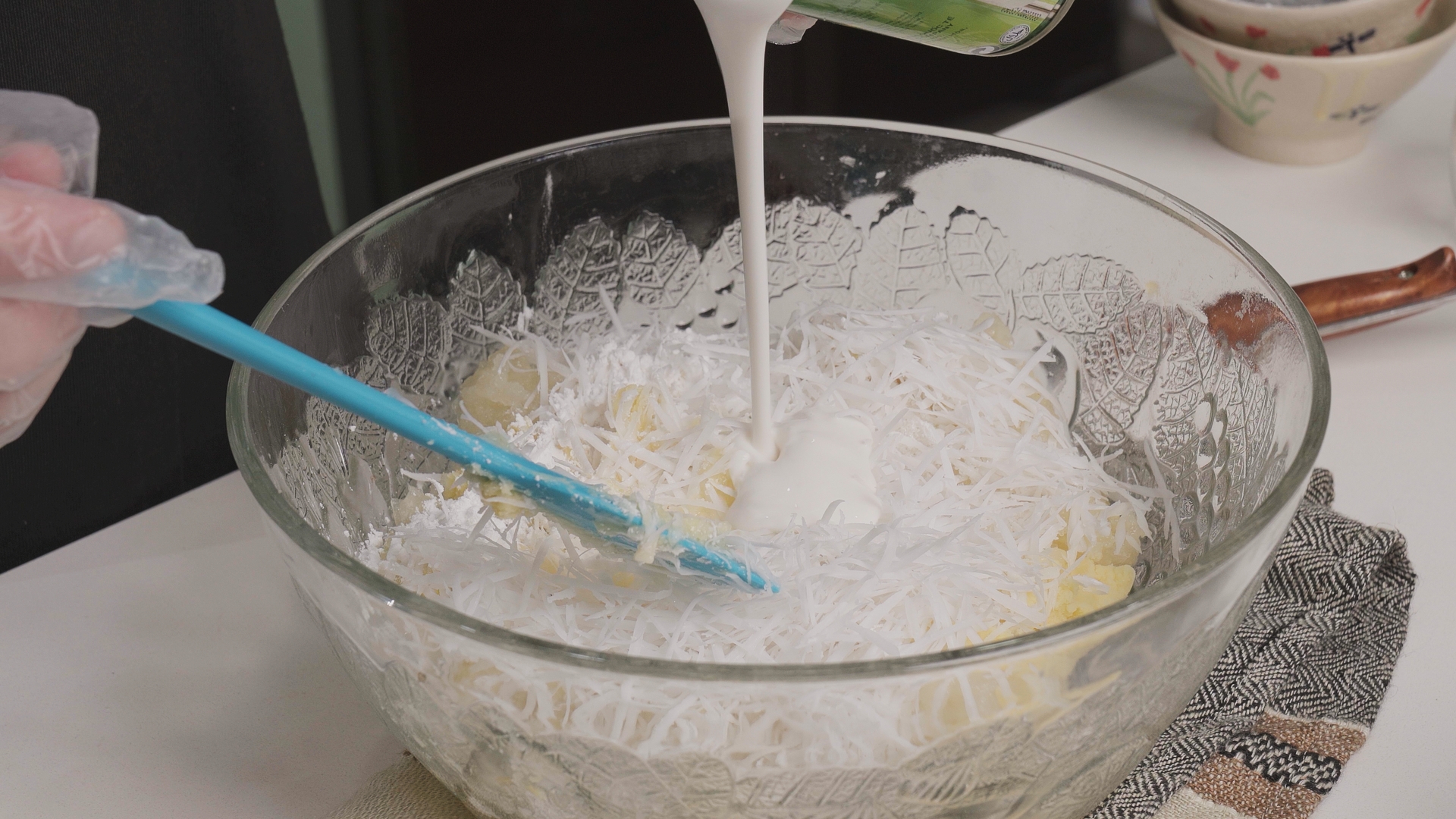
Save a little shredded coconut to sprinkle on top of the cakes after they are cooked for an extra layer of texture and flavor.
Once everything is well combined, pinch off small portions of the dough and roll them into balls. Flatten them slightly to form cakes, and smooth the edges to create a neat shape. Sprinkle sesame seeds on both sides of each cake. This recipe yields about 12-16 cakes depending on their size.
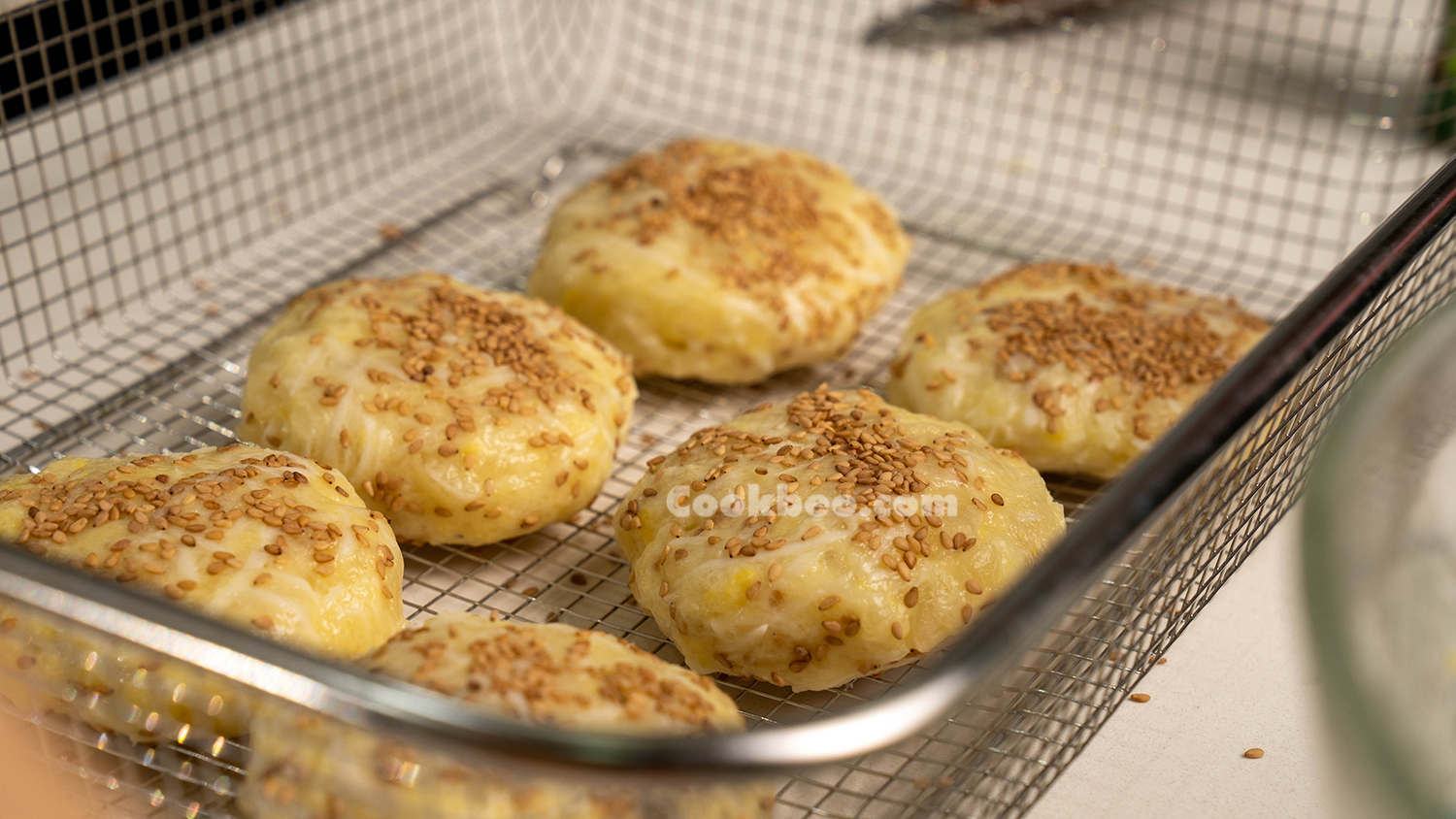
Cooking the Cassava Cakes
You can cook cassava cakes over a charcoal grill, in an oven, or using an air fryer. This recipe shows you a simple stovetop method by pan-searing the cakes.
First, lightly oil the surface of a pan and heat it over medium-low heat. Add the cakes to the pan, gently pressing them down and smoothing the edges to maintain a round shape. Cook until both sides are golden brown, then remove from the pan.
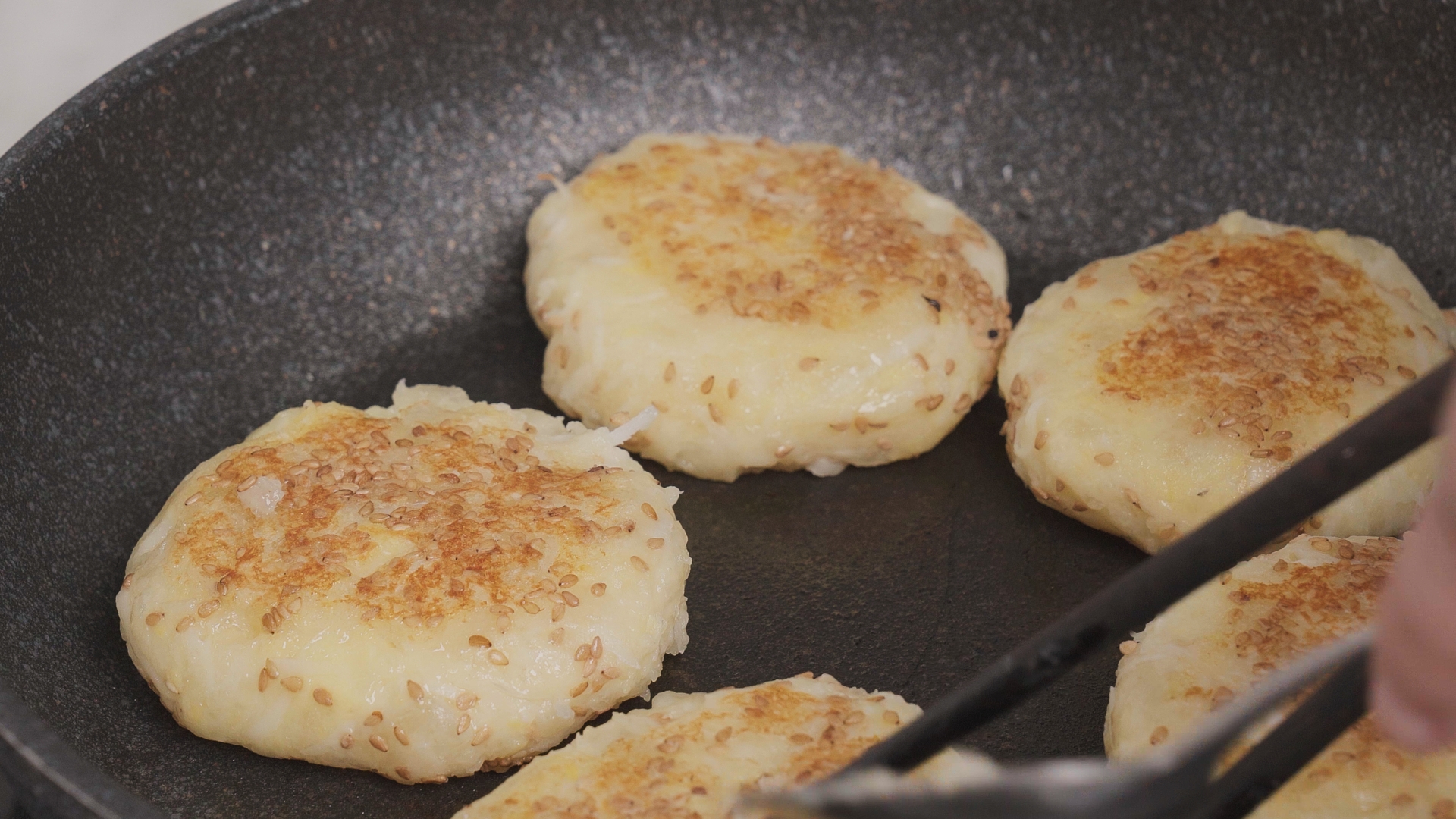
If you're using an air fryer, set the temperature to around 180°C (350°F) and cook each side of the cake for about 5 minutes, adjusting as needed until golden. Before cooking, brush or spray a thin layer of oil on the cakes to prevent them from drying out. Shredded coconut can burn easily, so keep an eye on it.
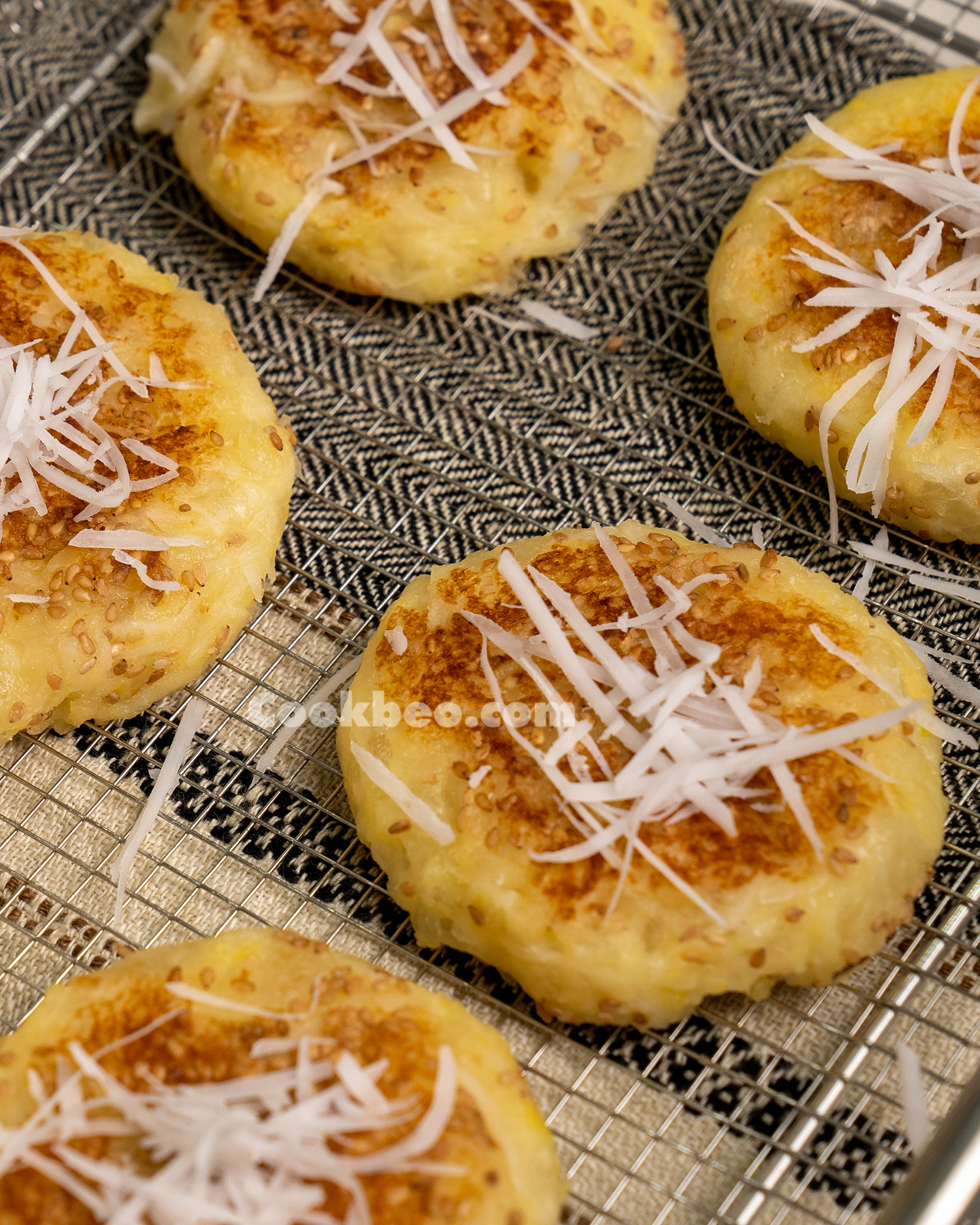
Cassava cakes are best enjoyed hot when they are chewy, fragrant, and rich in flavor. However, be careful not to overeat them, especially on an empty stomach, as they can cause dizziness.
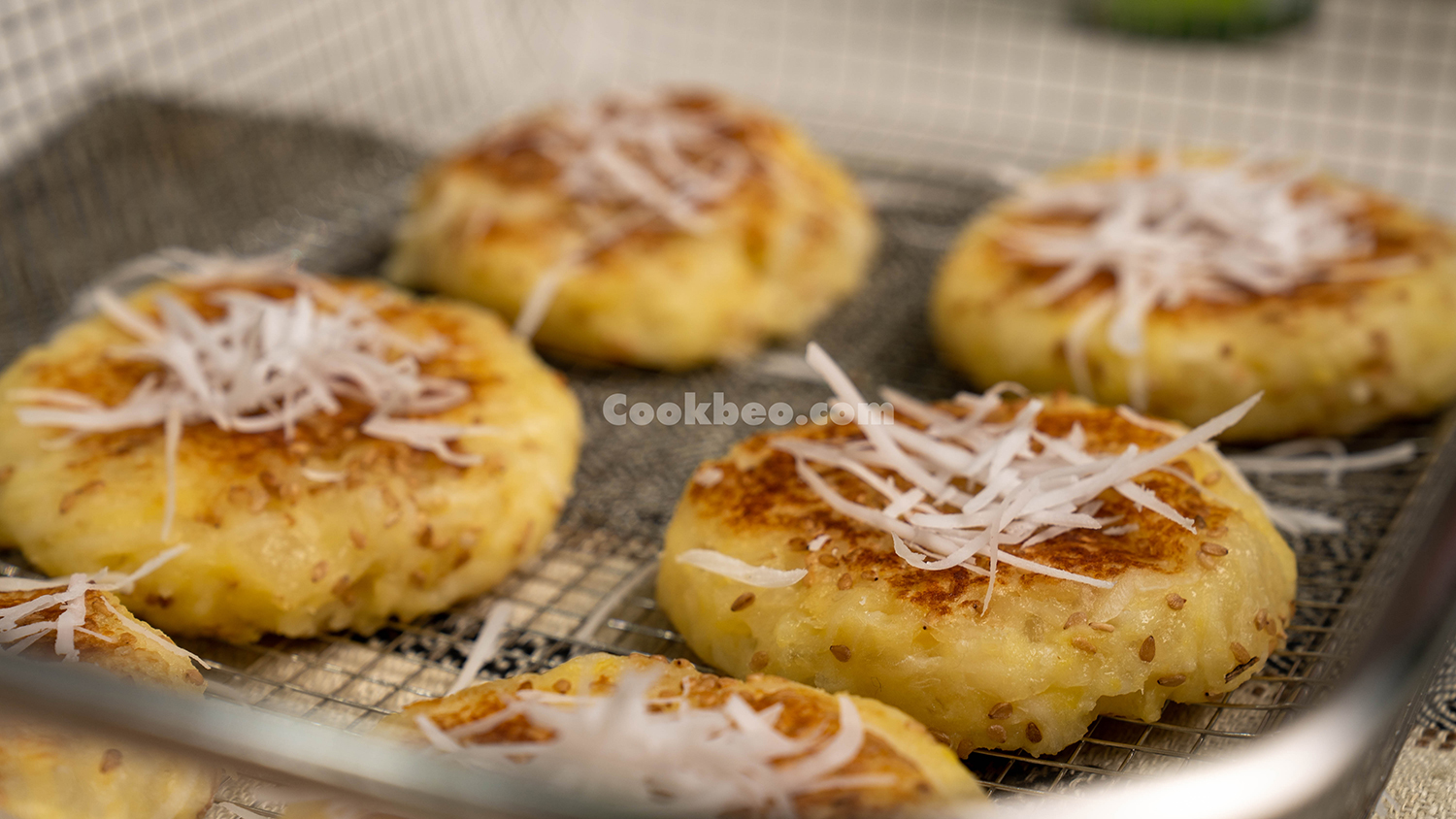
This is the Northern-style cassava cake. The Southern version is slightly different: the cassava is blended raw, and the liquid is drained. The remaining starch is mixed with the cassava pulp, milk, and sugar before baking. This results in a soft, jiggly cake similar to sponge cake.
We hope these instructions help you make delicious cassava cakes! Don't forget to share your results in the comments!




